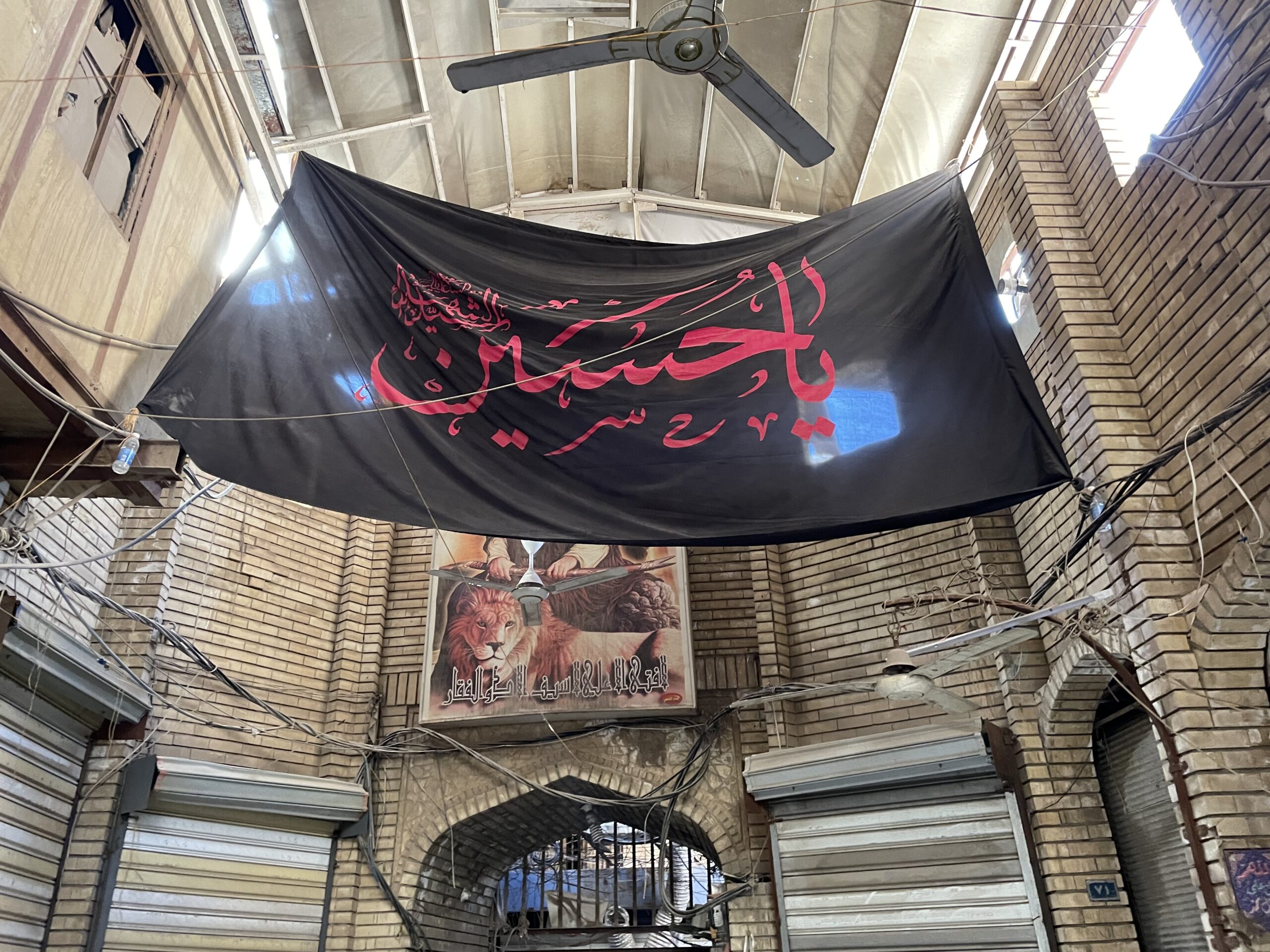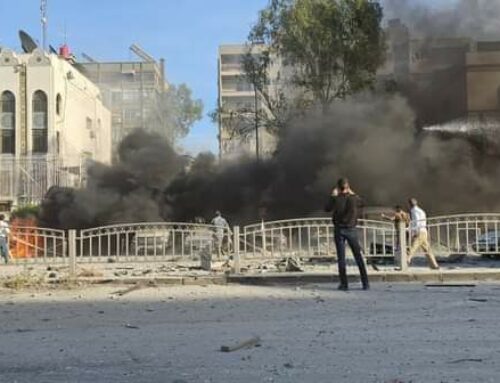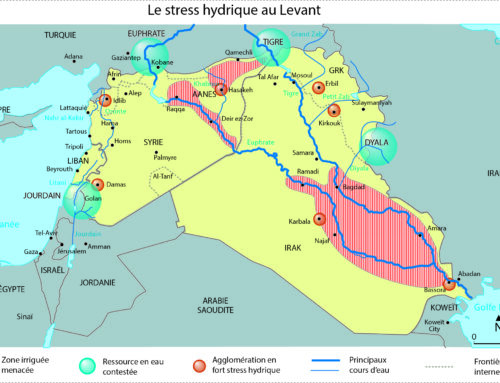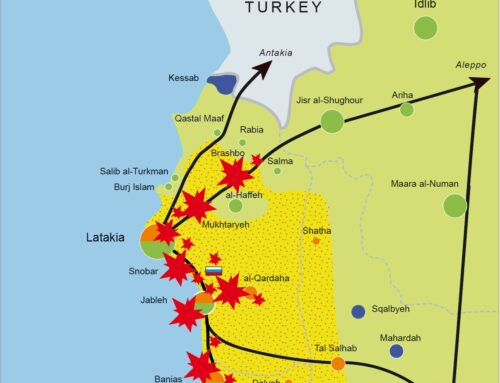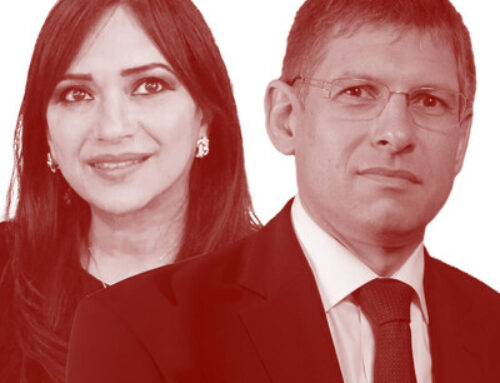Iran is increasingly extending its influence across the Middle East and beyond, particularly through militias its control in Lebanon, Iraq, Syria, and Yemen. Fabrice Balanche is a assistant Profesor at the University of Lyon 2, HDR, specialist in the Middle East. He is notably the author of “Lessons from the Syrian Crisis”, published by Odile Jacob (March 2024).
Comments collected by Guy-Alexandre Le Roux and published on January 29, 2024 in French by Conflits
Who are these offshoots of Iran?
The Hashd al-Shaabi militias, or Popular Mobilization Units if translated into English, were born in 2014 as part of the fight against Daesh. At the time, the Ayatollah Ali al-Sistani, who is Iraq’s top cleric, called for the mobilization of Shiites against Daesh. More than 100,000 people joined the militias, which remained active after the war. Now PMU are paid by the Iraqi Ministry of Defence. These militias are fairly autonomous, but several of them are remotely controlled by Tehran. The militia of Moqtada al-Sadr, an imam who is a little distant from Iran, but whose game is unclear, does not depend on Tehran a priori. More than 150,000 fighters make up these militias today, they are employed in Syria where 50,000 of them are deployed to allow Assad to hold the country. The Alawite minority on which the Syrian president relied has been bled by the war, and he cannot control the territory without Shiite militias. They are not only used for this in Syria. The militias also provide geographical continuity between Iran and Hezbollah for the delivery of weapons, ammunition and military equipment then pointed towards Israel.
The numerically main force today is Hashd al-Shaabi, but Hezbollah is the first satellite, created in 1982 as part of the civil war. He flourished to become a logistical success and built himself a real army with military coordination skills. Hezbollah is capable of getting along with regular forces. It also takes care of training the other militias that Iran sets up. In Syria, Hezbollah trained the National Defence Forces, paramilitary groups set up by the government to protect villages, neighbourhoods and to retake the territory. These forces are today integrated into the 5th Syrian Army Corps, financed by Syria even if Tehran has control over it. Unlike Hashd al-Shaabi, these forces are only used in Syria.
It’s the same thing for the Houthis. From 2012-2013, when the civil war was in full swing in Yemen, members of Hezbollah went to train Houthi officers and soldiers. The war in Yemen, which initially pitted the centre against the peripheries, became an ethno-religious conflict when the Houthis started seizing Sunni towns in the south in 2015.
How did Iran manage to create these militias?
Iran relies on Shiite communities, persecuted almost throughout the Sunni Muslim world, to constitute its satellite militias. Even the Iraqi Shiites, who nevertheless dominate the country, fear a return to Sunni authority which would send them back into marginality. The Shabak community, a Shiite minority present in the Mosul area, in Iraq, is the perfect example. This population came from Persia in the 17th century at the time of the war between the Sassanids and the Ottoman Empire to participate in the siege of Mosul. The Persians left, and these Shiite population stayed. In a Sunni environment, Shabak had already known how to hide themselves by adopting a Sunni veneer. When the Shiites became dominant in Iraq, this community became openly Shiite again and now serves Iran in the Mosul region. It is the Sabak militia which regularly targets the American base in Erbil. By getting closer to Iranian and therefore Iraqi power, it can thus appropriate the lands belonging to the Sunni bourgeoisie of Mosul who today can do nothing against it.
The difficulties of the Shiites in the Arab world and local conflicts are admirably used by Iran to form militias which are favourable to it. Shiite solidarity is the main driver of Iranian expansion in the Middle East. The longer it lasts, the more these communities are integrated into the Iranian system. We have reached a point of no return, because by refusing Iranian protection, Shiite communities would suffer revenge from the Sunnis, particularly through Islamist groups, as we saw during the Syrian civil war where the Alawites were the preferred targets of jihadists and the Sunni rebellion in general.
Is Hamas one of these Iranian satellites?
The case of Hamas is different, because it is Sunni. Iran has always wanted to go beyond the Shiite world to find allies throughout the Muslim world. All anti-Israeli movements therefore rely on Iran as a powerful ally. Hamas no longer really has any support in the Sunni world. Certainly, its political office is hosted by Qatar and the small emirate finances its activities in Gaza, but more to maintain a channel of discussion which puts it at the centre of the diplomatic game than out of interest in the Palestinian cause.
Iran does not hesitate to support the Sunnis if it is in its interest. The Iranians thus allowed members of al-Qaeda into Iraq from Afghanistan, such as Abu Musab al-Zarkawi, during the American occupation (2003-2011) so that they could harass Washington’s forces and push it to leave Iraq. This remains Germany and Lenin in 1917, when Berlin allowed the leader of the Bolsheviks to travel by train across its territory from Switzerland to launch the second revolution which would lead to Russia’s withdrawal from the First World War.
If the Iranians manage to create these militias so easily, it is because many states in the Middle East are bankrupt and there is no national unity, the community and the tribe constituting the foundations of the society and the regimes.
How long has Iran been using these militias?
Since the Islamic revolution in 1979. As in most revolutions based on a new ideology, there was in the 1980s a willing to export the revolution because the Ayatollah regime wanted to transform the Muslim world, hence the creation of Hezbollah in 1982 and the support of Iraqi Shiites as part of the Badr force against Saddam Hussein. In Iraq in 2003, Moqtada al-Sadr’s militia was supported by Tehran, but it has since distanced itself somewhat. Iran also tried to create clandestine groups in Saudi Arabia, in the Hassa Province (in the northwest of Arabia), because Saudi Shiites are among the most persecuted in the Middle East.
Are the militias long-term allies for Tehran?
In Tehran, the militias are long-term allies regarding the Shiites, but the Sunnis are not at all. Hamas was headquartered in Damascus before the civil war, but as it supported the rebellion in 2011, it later moved to Qatar. The Sunnis are not reliable allies for Tehran. The Hamas-Iran link is just transactional as part of the “axis of resistance” (against Israel and the United States). This reconciliation after a decade of cold weather allowed Hamas to launch the October 7 attack.
About this subject, what is the level of involvement of Iran in the attack on October 7?
Decisive at all levels, he is even the sponsor without a doubt. Because Hamas is much less effective than Hezbollah, it has historically remained confined to Gaza and the West Bank, and does not have high-level military experience. For this operation, intelligence, resources and logistics were needed that only Iran could offer.
How was Iran able to supply Hamas?
Through the border with Egypt, whose police and administration are most corrupt, the doors are open through Sinai to supply Gaza thanks to multiple tunnels.
What are Iran’s objectives through these militias?
Today, the export of the Islamic revolution is over. Iran has become a realistic power, but which continues to utter an ideological discourse. That hides its imperialist objective materialized by the Lebanon-Syria-Iraq-Iran axis. Proxies also make it possible to indirectly confront the Americans, and to place responsibility for actions on Hezbollah or the Houthis. In the Arab press, we make fun of Iran for allowing its Hamas allies to be massacred. The Iranians are obliged to respond by proving that they are active by harassing American troops in Syria and Iraq. They were waiting for the Pentagon to respond a little too hard on the Iraqi Shiite militias, so that the Iraqi government would demand their departure, which is now the case. However, if the Americans leave Iraq, they must also evacuate eastern Syria.
Tehran also threatens the Gulf monarchies from Yemen, transformed into a regional missile launcher. This calls into question the economic development of Saudi Arabia, which receives missiles from time to time, the same for the United Arab Emirates. This is not favourable to the business climate. The Iranians have real power to cause harm thanks to their local allies.
And in relation to Israel, the objective is to threaten the Jewish state so as not to be attacked in return. If the Americans decided to strike Iranian territory directly, Iran would respond by launching a few thousand missiles at Israel from South Lebanon and Syria. Hezbollah constitutes a deterrent force while waiting to have nuclear weapons.
Are there Iranian ramifications in Europe or Central Asia?
Through the Shiite diaspora, Iran has some ramifications. However it is mostly in sub-Saharan Africa and Latin America. Hezbollah is present on the borders of Brazil and Paraguay, on the drug trafficking route. This is where the question of the resources of these militias arises. Those of Hezbollah are partly based on drugs, of which neighbouring Syria has now become the leading producer in the Middle East with a turnover estimated at $10 billion.
Does Tehran get a percentage?
I do not think so. Hezbollah’s budget is in deficit despite trafficking, because it has a large permanent fighting force and it maintains a very expensive social system across Lebanon, intended to ensure popular support. However, the traffic brings some relief to the Iranian financial backer. The Houthis are much more independent, because they are the masters of a vast territory which provides them with their own resources. They got their hands on equipment from the Yemeni army in 2014, particularly missiles, but they were obsolete and had to be modernized. It was the Iranians who did it. Hashd al-Shaabi costs Iran nothing since it is financed by oil revenues from the Iraqi state, already under the control of Tehran.
The Hazaras, Shiites of Afghanistan, are also supported by Iran. There is a modus vivendi between the Taliban and the Iranians to protect these people, so the Hazara militias are necessarily protected by Iran given that they have no confidence in the Taliban.
What is the level of autonomy of satellite militias?
Tehran has always left a great level of autonomy to its local allies, particularly in the form of its political integration and in obtaining its own resources. But it requested within the framework of Iran’s regional strategy, as we were able to see during the Syrian civil war where the “Shiite international” intervened to save the regime of Bashar al-Assad, the keystone of the Iranian axis in the Levant. Regarding the conflict with Israel, the destruction of which remains the utopia of the Islamic Republic, Hezbollah is very dependent on Tehran where all decisions are taken. However, Tehran has little involvement in internal affairs in Lebanon. Nor will it send Hezbollah to fight with the Jewish state in this war between Israel and Hamas. Iran’s leaders know that direct conflict will lead to its destruction and that of Lebanon, and that even the Shiite population would blame them for the disaster. They are aware of the limits.
The Houthis are much further away, but they coordinate with Iran to launch missiles at Middle Eastern countries or ships passing through the Bab al-Manded Strait. However, the Houthi regime needs international recognition and we cannot exclude that its anti-Israeli activism is also driven by the desire to become a major geopolitical actor in the region and not a simple Iranian proxy.


